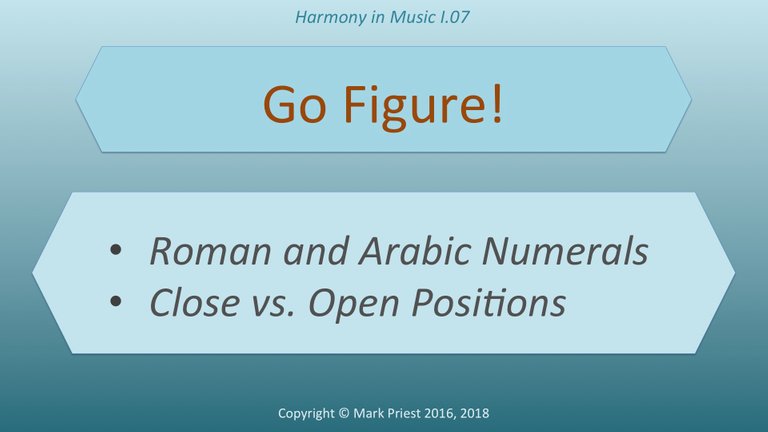
As you may have guessed, there is an ongoing relationship between numbers – figures – and musical science. In our four-part writing, we have focused on the Primary Triads of the first, fourth, and fifth degrees of the scale: the tonic, subdominant, and dominant.
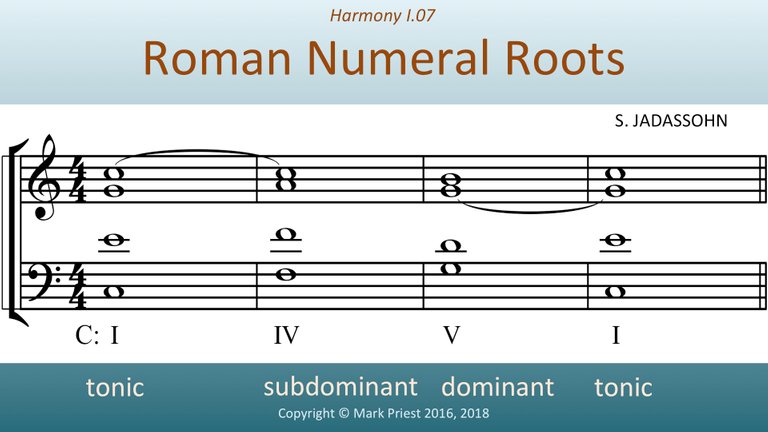
We marked the bass notes with Roman Numerals, and for now, the bass notes are the roots of the chords.
Notice how the key is labeled beneath the start of the section. Just so you know, we’ve borrowed a few musical examples from Salomon Jadassohn’s Manual of Harmony, and other books. Jadassohn was a well-respected composer-professor in the late 19th century, who wrote several music theory textbooks presenting essentially the same concepts as those taught in university courses today. Furthermore, his books are in the Public Domain and legally available, often downloadable for free. Publication information is listed in the description box.
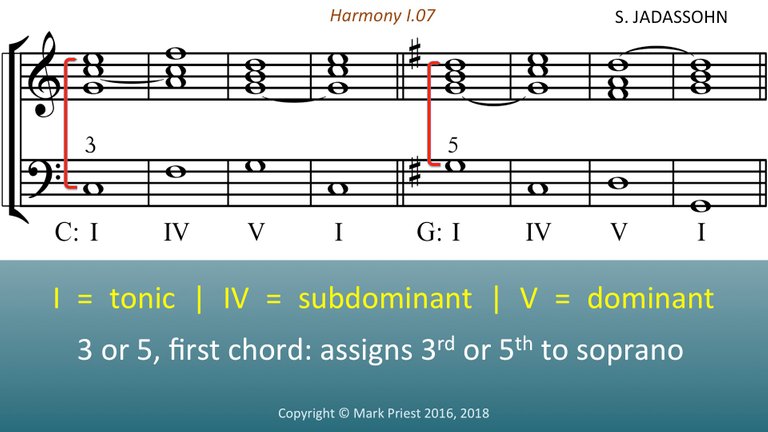
Over just the first bass note of each section, we now add a few Arabic figures, 3 and 5, to indicate whether the top voice starts with the third, or the fifth of the opening triad.
On the other hand, ...
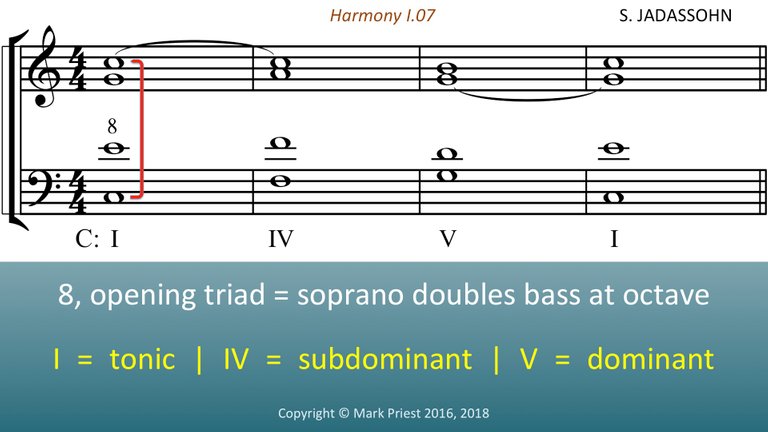
When the soprano doubles the bass at the octave or double octave, the Arabic figure “8” can be added above the first bass note, if necessary.
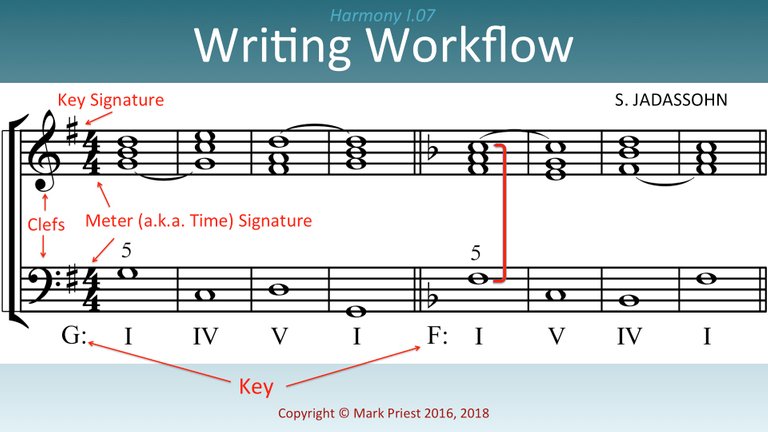
When working out the early exercises of this program, your writing workflow should include the following: Clef, key signature, and meter or time signature, with Roman numerals below the bass, and Arabic figures just above. Be sure to also label the key, as shown.
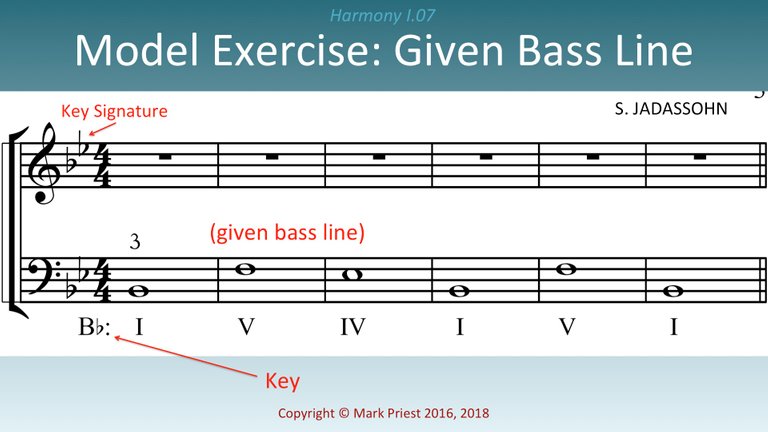
In some exercises, you will be given only the bass line and key signature; you, the student, will have to figure out the correct notes for the three upper parts ...
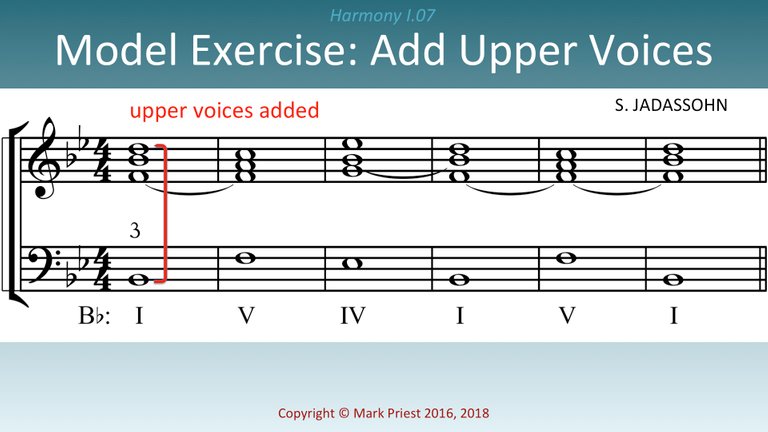
… and write in the upper voices, according to the given bass, key, numerals and figures, like this (above).
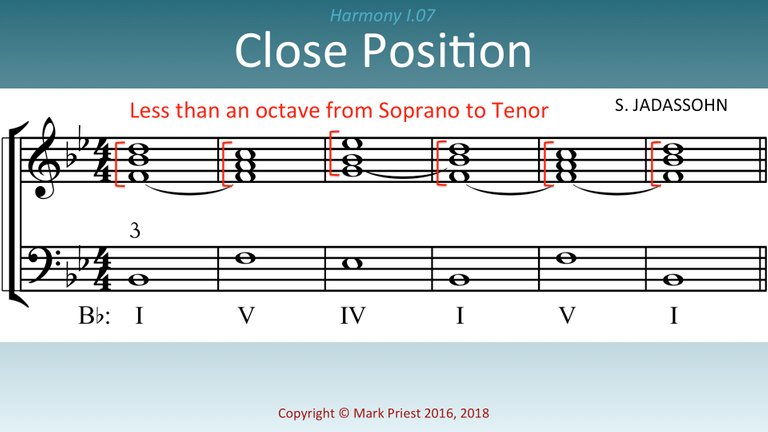
In the current example, the three upper voices are close together, never more than an octave separating the Soprano from the Tenor. We call this close position.
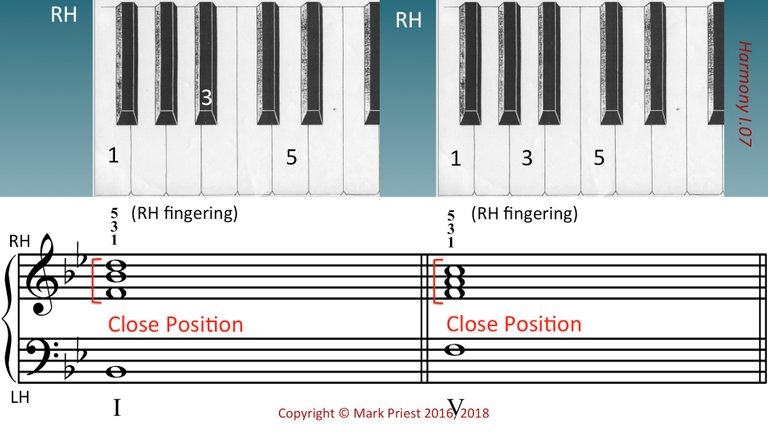
In close position, the upper voices are easy to play on the piano keyboard, fitting comfortably under the fingers of the right hand.
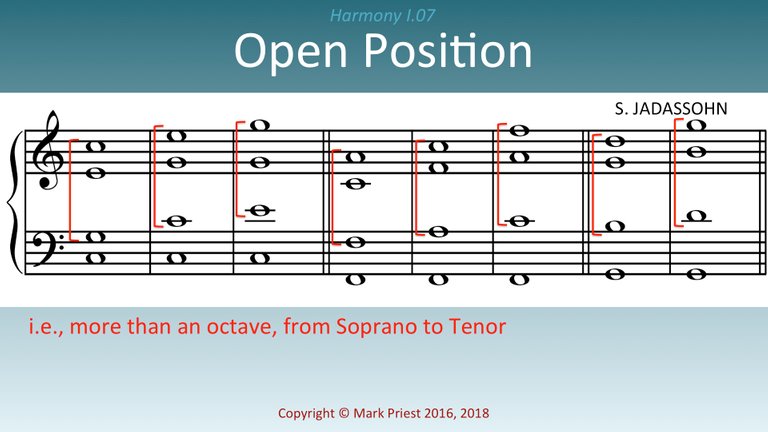
When the Soprano, Alto, and Tenor spread beyond an octave, we call that open position.
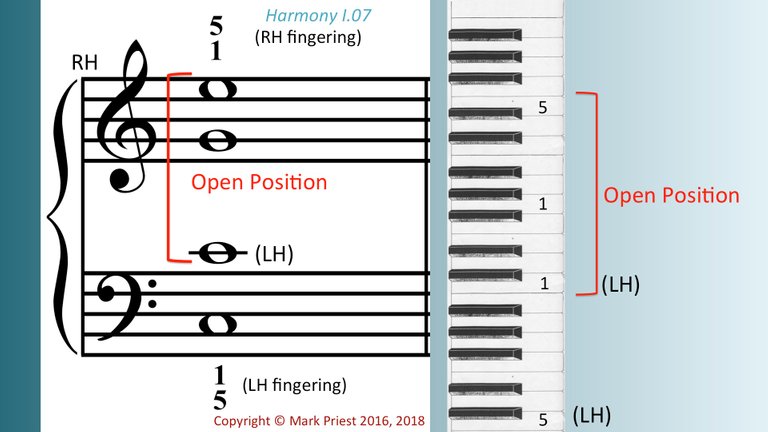
Here is an open position chord, as voiced on the piano keyboard. Notice how the Tenor part is now played with the left hand, along with the bass, while the right hand plays the Soprano and Alto notes.

To close an open position chord, either transpose the Soprano note down an octave, inserting it between the Alto and Tenor (thus, that tone becomes the Alto) ...
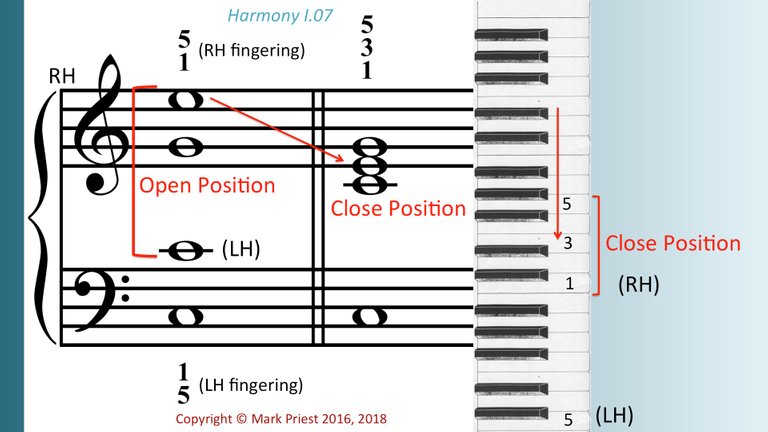
Hear the difference?

Or, transpose the Tenor note up an octave, lodging it between the Soprano and Alto, making that pitch the Alto of the close voicing.

Compare the sound of the open and close position of the same chord.

Opening a close position chord is simply a matter of transposing the Alto note up or down an octave – staying within the proper voice range – effectively making that note the Soprano or Tenor of the open position chord. Compare the sound of the two chord positions.
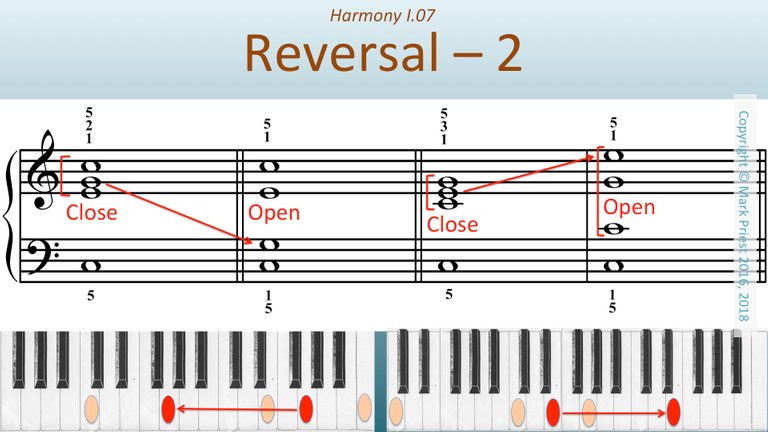
Here again, the Alto is transposed up or down an octave, to the soprano or tenor position. Compare the sound of these open and close position chords as they are played on the piano.

Knowing the open and close positions of chords will help you implement the various Rules regarding voice ranges, doubling, common tones, parallel motion, and leaps between chords, discussed in previous talks. According to the independent voice leading technique we are learning, the principles of proper four-part writing must be observed, whether writing in close or open position.
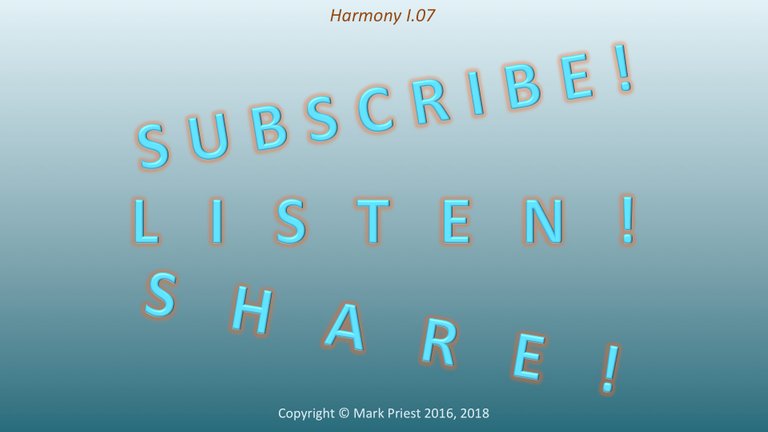
That’s all for now. Subscribe - Follow - for updates, and encourage others to do the same. Upvote and Resteem! Keep reviewing the other videos and Playlists, practicing, and listening. Your attention was most welcome!

The science and art of music.
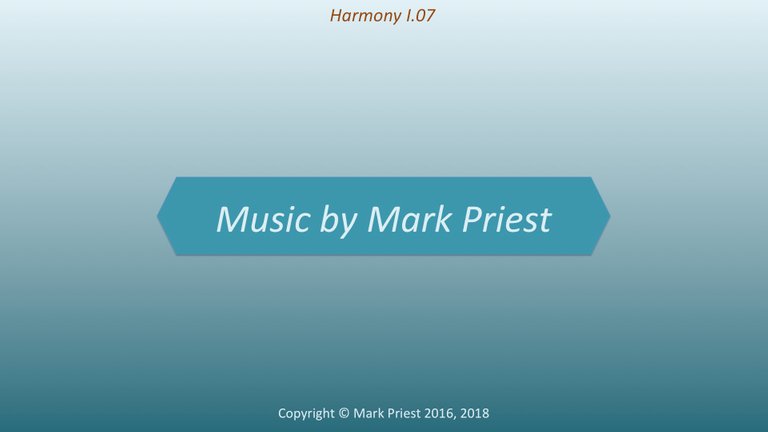
Previous Slides, Harmony I.06:
https://steemit.com/music/@monadnock/melodic-four-part-writing-similar-oblique-and-contrary-motion-harmony-i-06-slides-and-transcript
Harmony I.06 (VIDEO):
https://d.tube/v/monadnock/pdh6irkl
HELPFUL REFERENCES AND LINKS
Jadassohn, Dr. Salomon. Manual of Harmony, translated from the German by Paul Torek. Breitkopf and Hartel, 1890. A Public Domain work.
Jadassohn, Dr. Salomon. Elementary Principles of Harmony for School and Self-Instruction. Breitkopf and Hartel, 1895. A Public Domain work.
Public Domain Mark: https://creativecommons.org/publicdomain/mark/1.0/
Fundamentals of Music Playlist:
https://www.youtube.com/playlist?list=PLr9RYCj11MSxs91JeTfDvKtilJnOWw6JP
Elements of Music Notation Playlist:
https://www.youtube.com/playlist?list=PLr9RYCj11MSycDV5jr07-Sl60ymZyadET
Piano Beginnings Playlist:
https://www.youtube.com/playlist?list=PLr9RYCj11MSxPncb7aKgf90hnckKuiEhb